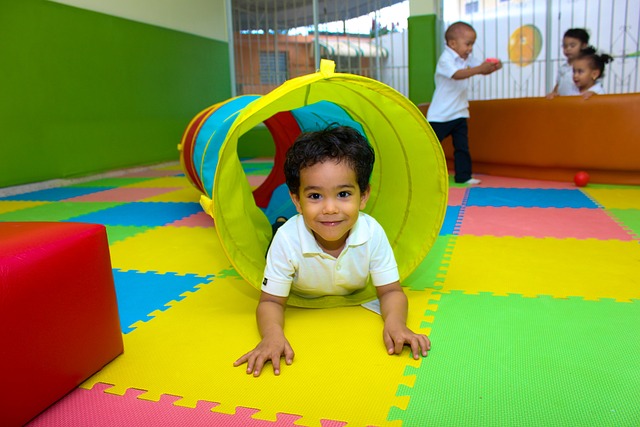Many parents and carers ask themselves: when should a child see an occupational therapist? Recognising the signs early and seeking support can make a significant difference in your child’s daily life, confidence, and long-term wellbeing. This guide will help you understand the key indicators, what to expect from an assessment, and how occupational therapy can help.

What Does an Occupational Therapist Do?
Occupational therapists (OTs) help children develop the skills they need for everyday activities—such as dressing, eating, playing, learning, and socialising. OTs work with children who have difficulties due to physical, sensory, cognitive, or emotional challenges. Their goal is to promote independence and participation at home, school, and in the community.
Key Signs Your Child May Benefit from Occupational Therapy
If you’re wondering when should a child see an occupational therapist, look for the following indicators:
1. Difficulties with Daily Activities (Self-Care)
- Struggles with dressing, using cutlery, brushing teeth, or toileting.
- Avoids or resists activities like hair brushing or nail cutting.
- Not yet potty trained at an age when most peers are.
- Becomes distressed during nappy changes or personal care routines.
2. Sensory Processing Challenges
- Overreacts or underreacts to sensory input (e.g., sensitive to loud noises, certain textures, or bright lights).
- Seeks out intense sensory experiences (e.g., crashing into things, spinning, or constantly moving).
- Avoids or is distressed by certain sensations (e.g., picky about clothing, avoids messy play).
- Chews non-food items or displays repetitive sensory-seeking behaviours.
3. Fine and Gross Motor Difficulties
- Trouble with tasks requiring hand coordination, such as using scissors, holding a pencil, or drawing.
- Difficulty with balance, coordination, or participating in physical activities.
- Appears clumsy, often bumps into things, or has trouble with playground equipment.
- Struggles with tasks like jumping, climbing stairs, or riding a bike.
4. Attention, Focus, and Behavioural Concerns
- Short attention span or easily distracted, especially in structured settings.
- Difficulty following multi-step instructions or completing tasks independently.
- Shows impulsive or rough play, sometimes leading to aggressive behaviour when dysregulated.
- Becomes frustrated easily and may have difficulty calming down.
5. Social and Play Skills
- Struggles to join in play with others or follow group rules.
- Has trouble sharing, waiting their turn, or coping with changes in routine.
- Finds it hard to manage emotions or becomes overwhelmed in busy environments.
- Prefers to play alone or has difficulty making and keeping friends.
6. School Readiness and Participation
- Difficulty sitting still, focusing, or engaging in classroom activities.
- Needs frequent movement breaks or alternative seating to maintain attention.
- Challenges with handwriting, using classroom tools, or keeping up with peers.
- Difficulty transitioning between activities or following classroom routines.




When to Refer a Child to Occupational Therapy
If you notice any of the above signs and they are impacting your child’s ability to participate in daily life, it’s a good idea to consult an occupational therapist. Early intervention can be especially helpful. An OT assessment can lead to tailored recommendations for home and school, supporting your child’s transition to more structured environments and helping them thrive.
What to Expect from an OT Assessment
- Comprehensive Evaluation: The OT will assess your child’s strengths and challenges across different settings (home, and/or nursery, school). Click here to find out more!
- Standardised Tools: Assessments may include standardised tests, observations, and input from parents and teachers.
- Personalised Recommendations: The OT will provide practical strategies, environmental adaptations, and, if needed, direct intervention sessions.
- Collaboration: OTs work closely with families, teachers, and other professionals to ensure consistent support.




Why Early Support Matters
Addressing challenges early can:
- Boost your child’s confidence and independence.
- Prevent secondary difficulties (e.g., low self-esteem, frustration).
- Support smoother transitions into school and social settings.
- Empower families with strategies to help their child thrive.
How to Get Started
- Speak to your GP, health visitor, or school SENCO if you have concerns.
- You can also self-refer to private occupational therapy services.
- Gather information about your child’s strengths and challenges to share during the assessment.
In summary:
If you’re questioning when should a child see an occupational therapist, look for persistent challenges in daily activities, sensory processing, motor skills, attention, or social participation. Early support can make all the difference. If you have concerns, don’t hesitate to seek advice from a paediatric occupational therapist. Early intervention is key to unlocking your child’s potential.
If you have concerns about your child, don’t hesitate to seek advice from an occupational therapist. Early intervention is key to unlocking your child’s potential.
